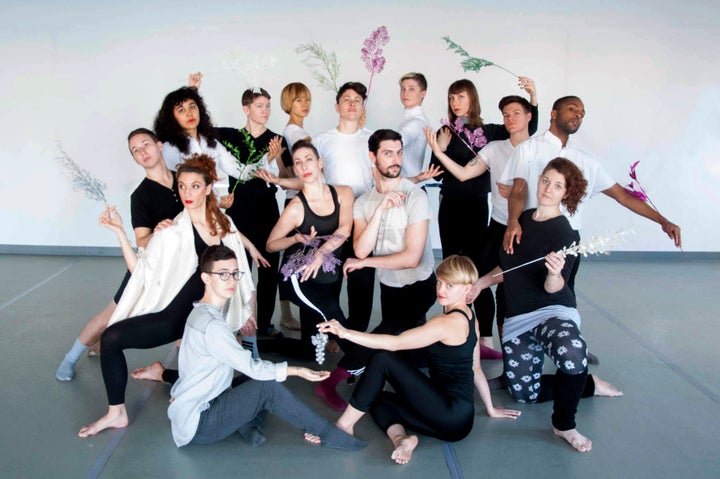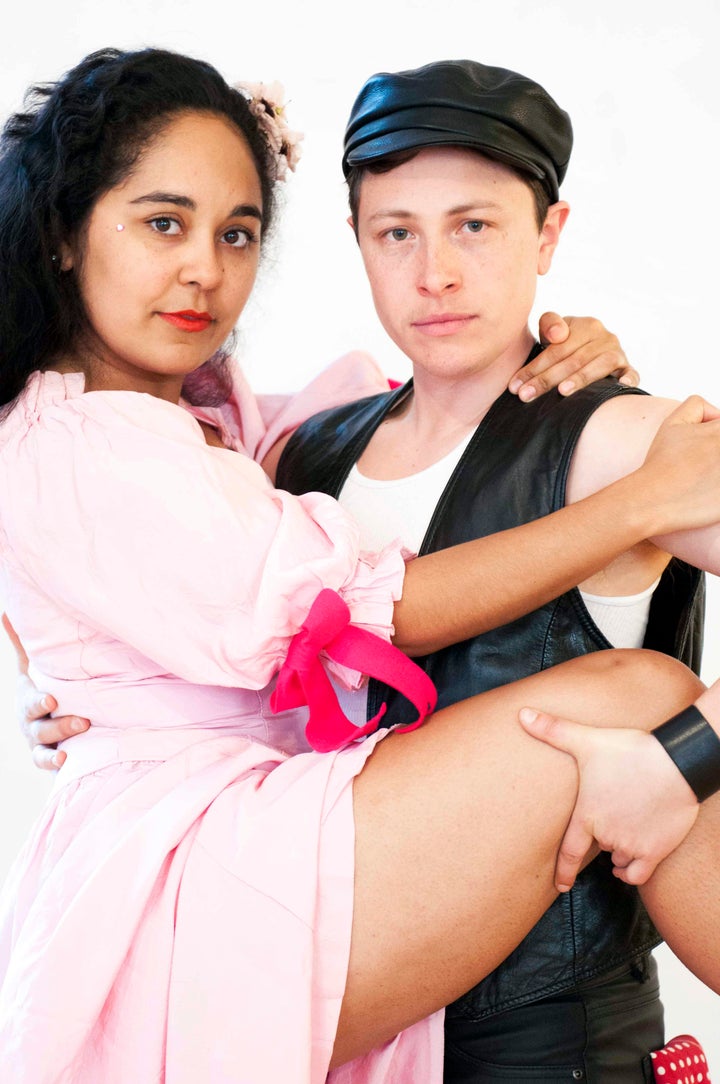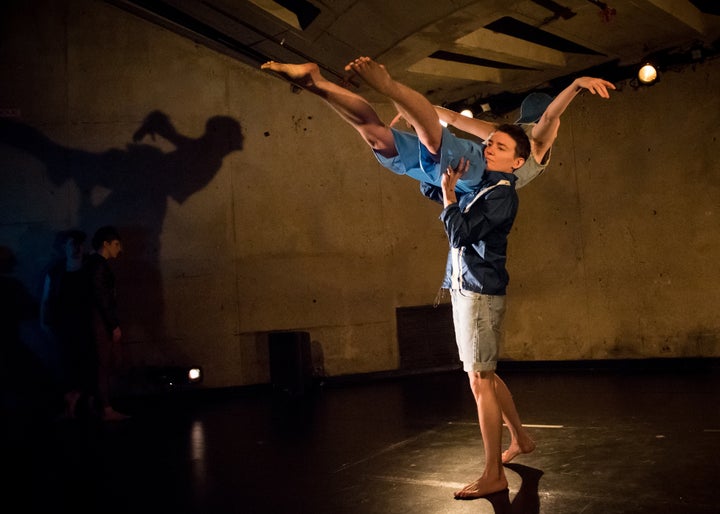
This ain't your grandma's "Swan Lake."
Ballez is a group of queer and trans artists, performers and musicians who are creating spaces for non traditional bodies and identities in the world of ballet. Artistic Director Katy Pyle founded the group alongside other like-minded individuals, including Jules Skloot, in 2011 after finding that the world of ballet did not celebrate or allow space for queer and trans bodies and narratives.
"Ballez re-writes classics from the ballet canon to celebrate the stories and performances of queer people, and reimagines the classically gendered characters of those stories in our own image," Pyle told The Huffington Post. "We diverge from the classical ballet gender binary and present, instead, multiplicity, complexity, and alternatives to the classical norms. The characters in our shows play with, and break, the classical rules in terms of how they dress, present, dance and behave in relationship to one another."
Now, Ballez is engaged in a Kickstarter campaign to fund a production of "Sleeping Beauty & The Beast," a queer reimagining of two classic tales that inserts the history of lesbian and queer activists in the narrative.
The Huffington Post chatted with Pyle this week about "Sleeping Beauty & The Beast" and the orgins of Ballez as a performance collective.

The Huffington Post: What is the history behind Ballez? How did it come about?
Katy Pyle: Ballez began in 2011 out of a latent desire within myself to return to the expressive dancing and narrative world of ballet, which I had loved as a child but been shut out from when my politics, gender, sexuality and body changed as a teenager.
I connected with a group of downtown dance friends around these desires, including my long-term choreographic collaborator Jules Skloot, and the word "Ballez" was born, initially as a joke. We thought, "what could be more ridiculous than downtown, queer dancers expressing their values in a ballet?" But, I love an anachronism, and I began ardently pursuing this very confusing question, with Jules and a group of wonderful, radical thinkers and movers.
After some research and initial proposals, Ballez had a residency at Brooklyn Arts Exchange to begin our first performance project, "The Firebird, a Ballez," and we started offering weekly classes, open to anyone who wanted to come into the studio and grapple with these ideas with us. After several work in progress showings around town, I was commissioned by Danspace Project to present the show in Spring 2013, and we brought in the 45 musicians of the Queer Urban Orchestra to play Stravinsky's score live, a cast of 15 wonderful queer activist/dancer performers, and we had three glorious sold out shows at St. Mark's Church. We went on to reprise the show that Fall, and were then invited to perform at the Brooklyn Museum, Abrons Arts Center and in various festivals around town.

In what ways does Ballez queer these classic shows from the ballet cannon? Why is this important?
Ballez re-writes classics from the ballet canon to celebrate the stories and performances of queer people, and reimagines the classically gendered characters of those stories in our own image. We diverge from the classical ballet gender binary and present, instead, multiplicity, complexity, and alternatives to the classical norms. The characters in our shows play with, and break, the classical rules in terms of how they dress, present, dance and behave in relationship to one another.
We take classic tales, that are part of a wider culture, like "The Firebird," "Sleeping Beauty" and "Beauty and the Beast," and create new stories that don't just include us, but celebrate us at the center of something grand, noble and glorious.
To insert ourselves into the ballet canon is pretty intense. Ballet has been very exclusive, imperialist, hierarchical... and by putting our bodies and our very different value systems into the canon, I hope that we can CHANGE its course and make more room for diverse representation.
The work we do serves to create new representations within the world of ballet and seeks to create more space for new bodies, stories and identities to see themselves reflected, admired and revered within that world... which I hope then translates into a greater sense of pride and nobility for queer people to inhabit in the greater world.

Why is it important to create spaces for queer, trans and gender-nonconforming people in the world of ballet?
The ballet world is woefully narrow in its scope of representation. And I think the form itself suffers from it. There are a lot of incredible dancers, like me and the people I work with, who have been shut out from that world because of those narrow ideas of how things should be, who should belong and what people can do. And because of that, a whole treasure of insights, ideas and beautiful dancing has been lost. And while there has been a modicum of space for gay men within the form, the experiences of queer women, gender non-conforming people and trans people has been completely ignored.
But I think we actually have a whole lot to offer. From my experiences living as a queer person in the world, I have learned to partner differently. I have not been expected to play a certain de facto role in my relationships, in terms of my gender and self-expression. I am a feminine-presenting person and yet, within the queer community, I am allowed to be a boss, to be strong and to lift up my partners, literally and metaphorically! I am allowed to be aggressive and powerful in my presentation and in my dancing. That is not something I experienced in the classical ballet world, and I think that's ridiculous. There are so many ways to be in our bodies, and I think the form of ballet should reflect that reality, and stop perpetuating a narrow gender binary (that's actually pretty boring).
“The ballet world is woefully narrow in its scope of representation”
What do you want people to take away from "Sleeping Beauty & The Beast"?
I want our audiences to leave the theater with a radically shifted sense of what a ballet is, what it should be and who it can represent. I want people to experience connection, love and transformation with these exquisite queer dancers and their very deep commitment to their performances. I want people to be moved by the orchestra, the costumes, the lights, and the story we are dancing. I want people to experience new possibilities. And ultimately I want this performance to resonate out from our community in New York City, to young dancers growing up all over the country and beyond, so that they could imagine possibilities for themselves, to be loved, valued, cherished and celebrated, just as they are, in a way that I never had access to.

